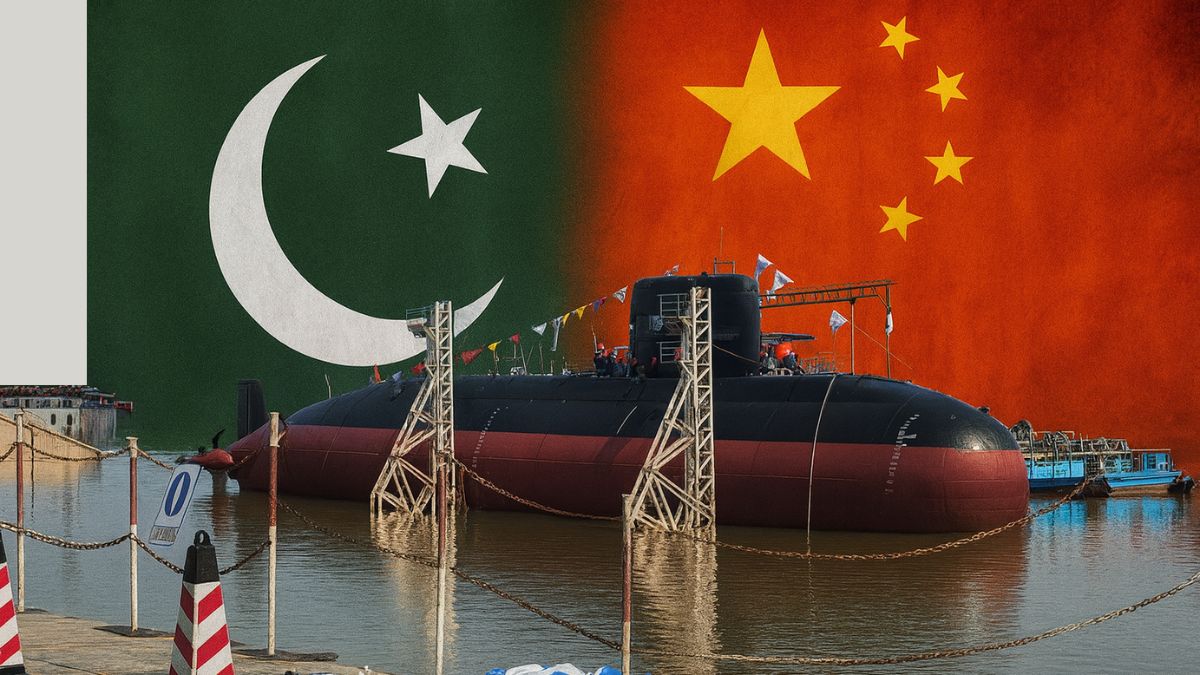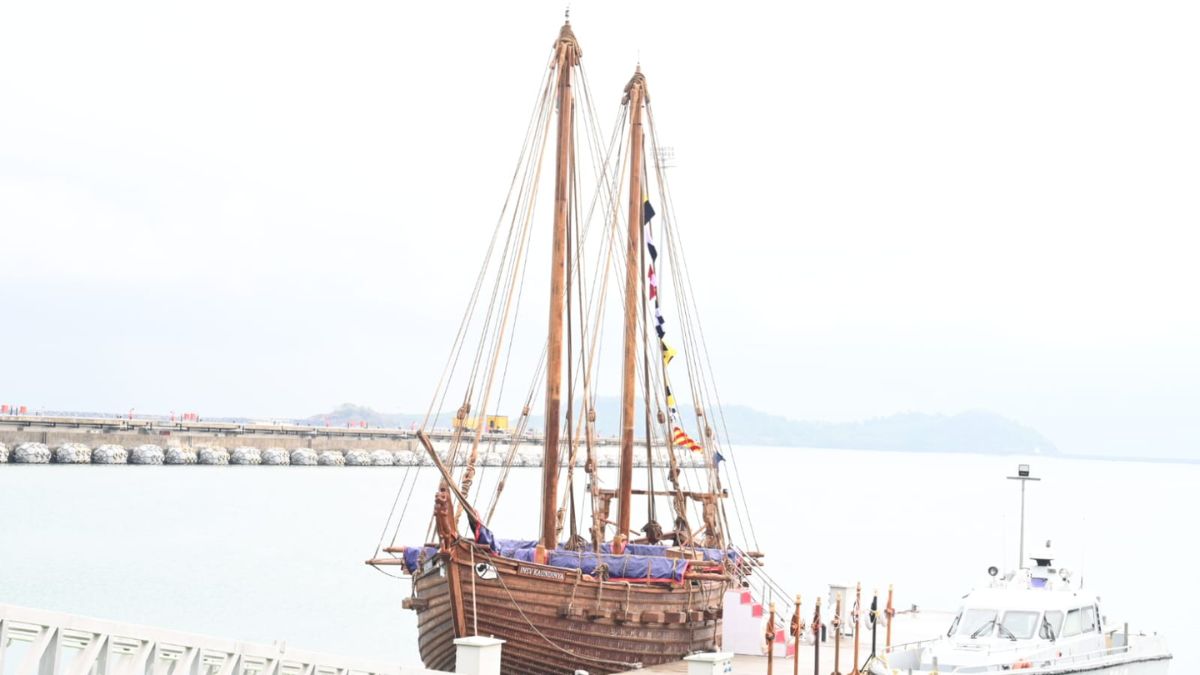The Cut-Rate Submarine: Why Hangor Isn’t The Yuan-class Beijing Keeps For Itself

Pakistan’s Hangor-class submarines face delays and engine doubts, while India strengthens its anti-submarine warfare edge in the Arabian Sea. Image courtesy: AI-generated picture via DALL-E
On August 15, 2025, at Wuhan’s Wuchang Shipyard, China launched the third Hangor-class submarine for Pakistan. Local media framed it as a “delivery” of an advanced undersea asset that would alter the balance of power in the Arabian Sea. For Pakistan, the ceremony was meant to project naval modernisation and deterrence.
Yet behind the spectacle, the Hangor is not what it seems. It is not the same submarine that China’s own People’s Liberation Army Navy (PLAN) deploys. Instead, it is a downgraded export variant of the Yuan-class, with unproven engines and a long road of trials before it becomes operational. In the unforgiving shallow waters off Karachi and Ormara, the Hangor faces vulnerabilities that India’s anti-submarine warfare (ASW) grid is already designed to exploit.
What makes the Hangor different from China’s own Yuan?
The Hangor is derived from the Type-039A/B Yuan-class submarine, a platform PLAN has fielded in large numbers since the mid-2000s. But export versions are rarely identical to domestic variants. Analysts have repeatedly observed that Chinese exports often carry lower-spec sonar suites, combat management systems, and acoustic quieting compared to PLAN fits. This is both to protect sensitive technology and to keep the most advanced capabilities for China’s own fleet.
Pakistan’s programme itself reflects this separation. Of the eight contracted boats, four are being built in Wuhan and four at Karachi Shipyard and Engineering Works under a transfer-of-technology agreement. While this arrangement promises local assembly, the core design remains an export-standard derivative—known in Chinese shipyard literature as the S26. In practical terms, it is a Yuan stripped down for sale.
Why are the engines a risk factor?
Originally, the Yuan-class was fitted with German MTU-396 diesel engines. But Berlin blocked exports of these engines for Chinese projects, citing arms control restrictions. To keep export sales alive, Beijing substituted its own CHD-620 diesels.
The CHD-620 has never been proven in service abroad. Thailand’s experience with its parallel S26T order illustrates the risk. Bangkok had to formally accept CHD-620s in place of MTUs and admitted a 1,217-day delay to its programme as a result. That is more than three years lost due to integration challenges with an untested propulsion system.
For submarines, propulsion is not just about endurance; it defines stealth. Every engine has a noise signature. If the CHD-620 runs louder than the German engine it replaced, Pakistan’s Hangors will be easier to detect. If it proves unreliable, boats will spend more time in dock than at sea. Either way, it undermines the very purpose of a submarine fleet.
Is the August launch the same as delivery?
No. The Wuhan ceremony marked the boat’s first entry into water, not its commissioning into the Pakistan Navy. From here, the vessel must undergo extensive outfitting, weapons integration, and sea trials. Crew training is another critical phase. This process can take 18–24 months before a submarine becomes operational.
Media reports in Pakistan and China often blur the distinction between launch and induction, creating an impression of immediate strength. In reality, India’s Navy and regional observers know that it will be years before the third Hangor is combat-ready.
How does India’s ASW posture affect the Hangor?
Even if the Hangor eventually proves reliable, geography and adversary readiness pose hurdles. Every Pakistani submarine must leave through shallow, noisy littorals off Karachi or Ormara. These are exactly the conditions where detection is easiest.
India has prepared deliberately for this. On June 18, 2025, it commissioned INS Arnala, the lead vessel of a new class of anti-submarine warfare shallow-water craft. Designed to guard littorals, these vessels carry ABHAY sonar, torpedoes, and ASW rockets. Beyond this, India already fields twelve Boeing P-8I Poseidon patrol aircraft, a newly commissioned squadron of MH-60R Seahawks equipped with dipping sonar and torpedoes, and four Kamorta-class ASW corvettes.
This layered net means that a Hangor leaving port would almost immediately enter an environment of active surveillance and prosecution.
What is the strategic takeaway?
The launch of the third Hangor is a political and symbolic event, not a military one. Pakistan is investing billions into a fleet that is both less capable than China’s own and heavily dependent on Chinese technical support. Its engines remain unproven, its systems are likely downgraded, and its ability to patrol freely in contested waters is doubtful.
Meanwhile, India has quietly built the tools to detect and neutralise these submarines from the moment they leave harbour. The result is a mismatch between perception and reality: a cut-rate submarine sold at prestige prices, launched in Wuhan but already hunted in the Arabian Sea.







